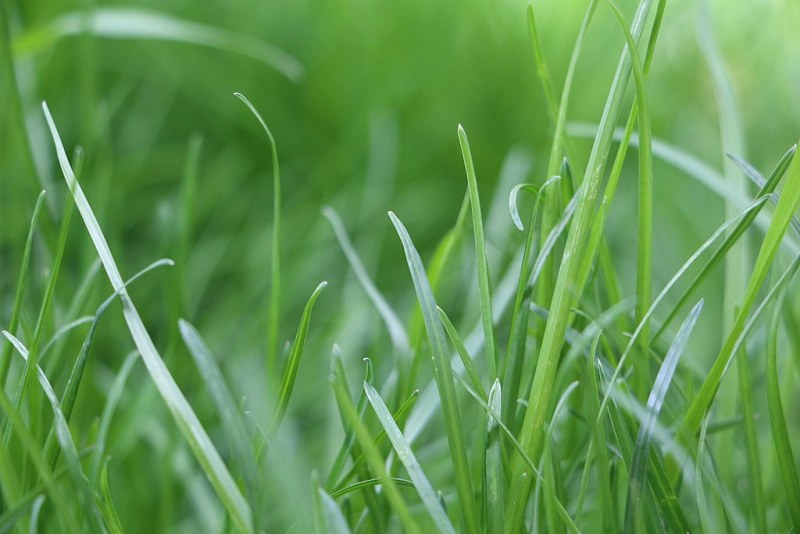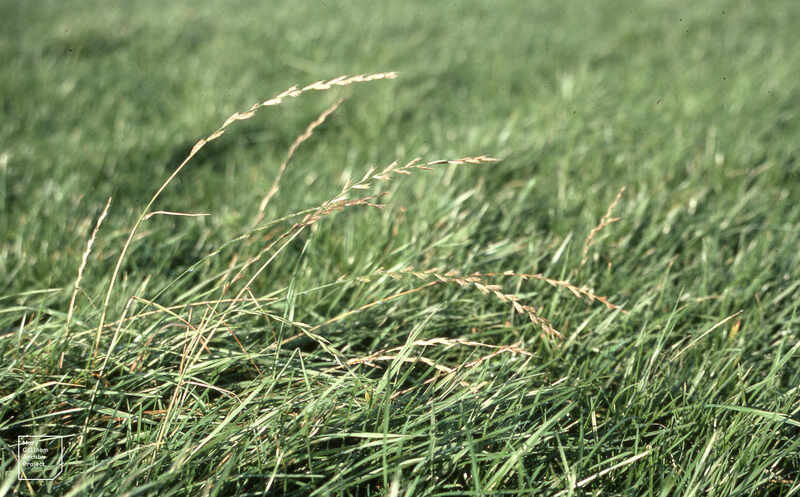4 Best Grass Types for Pittsburgh
BY CECILIA ACEVEDO | MARCH 24TH, 2023 | LAWN CARE, PENNSYLVANIA, PITTSBURGHYour Steel City yard can become green and beautiful when you choose the right grass. The secret is to grow grass that can survive both the summer and winter temperatures of Pittsburgh. To help narrow down your choices, we’ve gathered the 4 best grass types for Pittsburgh lawns.
Choosing the perfect type of grass for your home requires considering multiple factors carefully. By evaluating your yard’s climate, soil type, and sun exposure, you can make an informed decision and enjoy a healthy and beautiful lawn.
- Warm-Season vs. Cool-Season Grasses
- 4 Cool-Season Grasses for Pittsburgh
- FAQ About Pittsburgh Grass Types
- Choosing Plant and Grass Varieties for Your Pittsburgh Landscape
Warm-Season vs. Cool-Season Grasses
Warm-season and cool-season grasses are two types of grasses that thrive in different temperature ranges and have different growing habits.
Warm-season grasses are adapted to hot and dry climates, grow actively during the warm summer months, and become dormant during winter. They are more drought-tolerant and require less water than cool-season grasses.
Cool-season grasses, on the other hand, are adapted to cooler climates. They usually grow actively during the cooler months of spring and fall and can tolerate mild winters.
4 Cool-Season Grasses for Pittsburgh
Since temperatures are cool throughout most of the year in Pittsburgh, the best grass type for your yard is likely a cool-season grass. Let’s take a close look at the 4 cool-season grasses that thrive in Pittsburgh:
1. Kentucky Bluegrass

Photo Credit: Pilot138-17 / Wikimedia Commons / CC BY-SA 4.0
Kentucky Bluegrass is an excellent choice for homeowners who need to protect yard areas from erosion. Not only does the dense turf protect eroding soil, but it also creates a beautiful uniform look. It has moderate traffic tolerance and can withstand the occasional backyard BBQ as you cheer on the Steelers. It also recovers quickly.
Its root system tolerates drought conditions, but like most cool-season grasses, the turf becomes dormant and brown during hot, dry summers.
Kentucky bluegrass might not be the best option if you want to avoid high-maintenance turf. It demands fertilizer, is prone to disease, and requires frequent mowing. Got shade? Kentucky bluegrass won’t tolerate it.
Classification: Cool-season grass
Spreads by: Rhizomes
Shade tolerance: Low
Drought tolerance: Moderate
Foot traffic tolerance: Moderate
Maintenance needs: Moderate mowing frequency and high fertilization needs.
Mowing height: Set mowing height between 2.5 and 3.5 inches.
Potential for disease: Moderate to high; prone to several diseases, such as dollar spot, leaf spot, necrotic ring spot, summer patch, and stripe smut.
Soil pH: 6-7.5
Soil type: Performs best in well-drained, heavy soils with high fertility.
Other notes: Tolerates close, frequent grazing better than most grasses. Forms tight sod.
2. Perennial Ryegrass

Photo Credit: Dr Mary Gillham Archive Project / Flickr / CC BY 2.0
Perennial ryegrass has a fine-textured, lush, and dark green appearance. It’s commonly grown in athletic fields, landscapes, and cattle fields.
Perennial ryegrass is very popular because of its rapid growth and high traffic tolerance, which makes it ideal for homeowners that like to spend time outdoors. This grass is best for sunny lawns but tolerates partial shade.
If you would like to give ryegrasses a chance in your yard, consider that they are heavy users of water and don’t tolerate drought well.
Classification: Cool-season grass
Spreads by: Has a bunch-type growth habit
Shade tolerance: Low
Drought tolerance: Low
Foot traffic tolerance: High
Maintenance needs: Moderate mowing and fertilization requirements. Thatch is not significant.
Mowing height: Set mowing height to 1.5 to 2.5 inches
Potential for disease: High. Common diseases include gray leaf spots, red thread, and leaf spot/melting-out.
Soil pH: Can grow in soils with a pH between 5 and 8 but prefers between 6 and 7.
Soil type: Prefers good drainage and fertility but can tolerate some poor drainage.
Other notes: It is often mixed with Kentucky bluegrass for a more traffic and disease-resistant turf.
3. Fine Fescue
Fine fescues are known for their fine texture and excellent shade tolerance. In fact, fine fescue is the most shade-tolerant cool-season grass, particularly the chewings variety. So, if your backyard has shade, this may be the perfect grass for you.
This turf is also low-maintenance; it requires less water, fertilizer, and mowing than other types of grasses. As long as you water it regularly, this is the best grass for busy homeowners who would like to relax in a beautiful landscape.
Classification: Cool-season grass
Spreads by: Creeping red Fescue spreads by rhizomes, while other fine fescues are bunch-type grasses, such as chewing, hard, and sheep fescues.
Shade tolerance: Moderate to High, depending on species
Drought tolerance: Moderate to High, depending on species
Foot traffic tolerance: Low to Moderate, depending on species
Maintenance needs: Low fertilizer and mowing needs.
Mowing height: Set mowing height between 2.5 and 4.0 inches, depending on species.
Potential for disease: Moderate. Common diseases include red thread, leaf spot, dollar spot, summer patch, and powdery mildew.
Soil pH: 6-6.5
Soil type: Will not perform well in wet soil conditions. It prefers drier soils and tolerates a wide range of soil types and fertility.
Other notes: Fine fescue grasses are often added to mixtures with other cool-season grasses, such as Kentucky bluegrass or perennial ryegrass, to create a dense, attractive lawn that can withstand shade and drought.
4. Tall Fescue
Tall fescue is a coarse textured grass with a deep green color. Its deep root system allows it to tolerate drought and heat stress better than any other cool-season grass.
If you don’t mind mowing often, tall fescue is a good low-maintenance choice. If this grass’s deep root system, low maintenance, and rapid growth sound good to you, then it might be the perfect fit for your yard.
Classification: Cool-season grass
Spreads by: Produces short rhizomes but has a bunch-type growth habit
Shade tolerance: Moderate
Drought tolerance: Moderate to High
Foot traffic tolerance: Moderate
Maintenance needs: Frequent mowing. Does not produce significant thatch.
Mowing height: Set mowing height to 2 inches when grass reaches 3 inches tall.
Potential for disease: Tolerant of most diseases when properly maintained.
Soil pH: 5.5-6.5
Soil type: Adapted to a wide range of soil conditions but prefers fertile clay soils with good drainage.
Other notes: Many tall fescue lawns become thin after hot, dry summer conditions. Thin, tall fescue lawns can form clumps and become unsightly. To prevent this from occurring, it’s usually necessary to overseed tall fescue lawns in the fall.
FAQ About Pittsburgh Grass Types
Fine fescue is among the easiest cool-season grasses to maintain. It’s known for its fine texture, shade tolerance, and low maintenance requirements, making it an attractive option for homeowners and landscapers.
Of the cool-season grasses, Kentucky bluegrass is generally considered to be the softest and most comfortable grass to walk on. It has a fine texture and a dense growth habit, which gives it a lush, carpet-like appearance. Kentucky bluegrass is also known for its ability to self-repair, making it a durable choice for high-traffic areas.
Tall fescue is generally considered the best cool-season grass for poor soil conditions. It has a root system that allows access to nutrients and water from deeper soil layers, making it more drought-tolerant than other cool-season grasses.
Tall fescue is well adapted to different soil types, including poor and compacted soils. It can grow well in soil with low fertility and is more resistant to diseases and pests than other cool-season grasses.
Choosing Plant and Grass Varieties for Your Pittsburgh Landscape
Pittsburgh grass can withstand hot summers and cold winters, but different types have different characteristics and needs. Choose the proper kind for your lawn, thinking about your space, the use you will give it, and the work you are willing to do for it.
Would you like a lawn that can withstand barbecues and parties? Consider Kentucky bluegrass or perennial ryegrass. Do you have a shaded yard? Fine fescue is an excellent choice. Would you like a low-maintenance lawn? Think about tall fescue or fine fescue.
Remember that the type of grass you choose is just one part of your ideal landscape. There are various low-maintenance landscaping options and native plants popular in Pittsburgh.
A welcoming backyard is within reach. Contact a Pittsburgh lawn care pro who can maintain your lawn and landscaping.
Main Photo Credit: MartinThoma / Wikimedia Commons / CC0